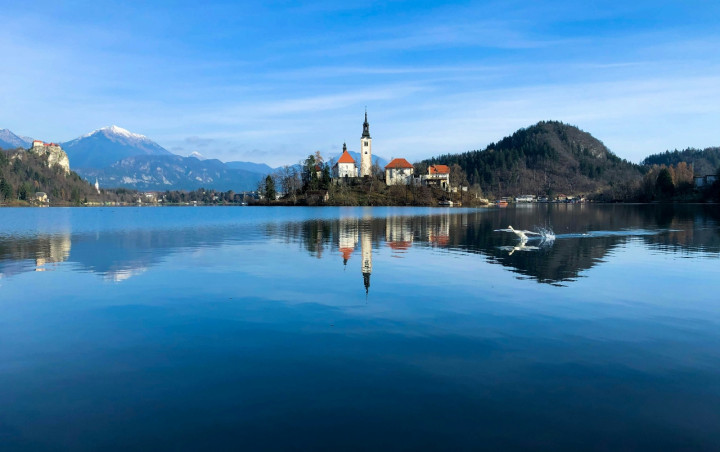Turizem
Trajnostni turizem, ki vključuje celo državo.

V letu 2024 naj bi turizem dosegel raven pred pandemijo, prispeval 5,4 % k BDP (8,5 % s posrednimi učinki) in zaposloval približno 8 % slovenskega prebivalstva. Večina proračuna za turizem v višini 63,3 mio € (2022) prihaja iz programov EU nextGen in ReactEU za zelene/digitalne/trajnostne infrastrukture in destinacije. Strategija slovenskega turizma 2022-2028 se osredotoča na kakovosten turizem.
A glede na razpoloženje v najbolj obiskanih turističnih krajih, se zdi, da nekateri deli Slovenije ne služijo več svojim prebivalcem: mestna središča se komercializirajo, cene so prilagojene denarnicam turistov in ne razpoložljivemu dohodku Slovencev. Stanovanja niso več dostopna zaradi kratkoročnih najemov, ki zmanjšujejo število dolgoročno dostopnih bivališč. Da bi se izognili usodi evropskih metropol, kot sta Benetke ali Barcelona, ki se že soočata z negativnimi posledicami pretiranega turizma in izrinjanjem lokalnega prebivalstva, želi Volt ponovno preučiti cilje naše turistične strategije in jih prilagoditi trajnostnim ciljem.
Volt Slovenija predlaga:
Ohranjanje značaj slovenskih mest
Uvedbo kvot za nekomercialni prostor in podpreti neturistične dejavnosti v ključnih turističnih območjih, da se zagotovi dostopnost za lokalne prebivalce in ohrani raznolikost gospodarskih dejavnosti v urbanih središčih.
Zagotavljanje brezplačnega javnega prevoza za turiste, ki bivajo na obrobju mestnih središč in v predmestjih.
Regionalizacija turizma
Okrepitev prizadevanj za uravnotežen razvoj turizma po vsej Sloveniji, z razvojem turističnih destinacij v vzhodni Slovenije.
Preprečevanje prekomernega turizma
Določitev "trajnostne zgornje meje" števila obiskovalcev. Še posebej, če bo Slovenija še naprej sledila Hrvaški kot državi EU z najvišjo rastjo mednarodnih turističnih potovanj na 1.000 prebivalcev (1995–2022: Hrvaška +1120 %, Slovenija +400 %).
Trajnostni prevozf
Spodbujanje trajnostnega turizma. Ne le znotraj Slovenije, temveč tudi trajnostno potovanje v državo in nazaj. Z zanesljivo prometno infrastrukturo bi moral biti obisk naše države in vseh večjih turističnih destinacij mogoč z vlakom in javnim prevozom, brez potrebe po uporabi avtomobila.
Razviti povezavo Postojna–Rupa tako za avtocestni tranzit s Hrvaške do Postojne kot tudi za turistični razvoj, da bi spodbudili postanke v vaseh ob tej poti.
(v4 11-2025)